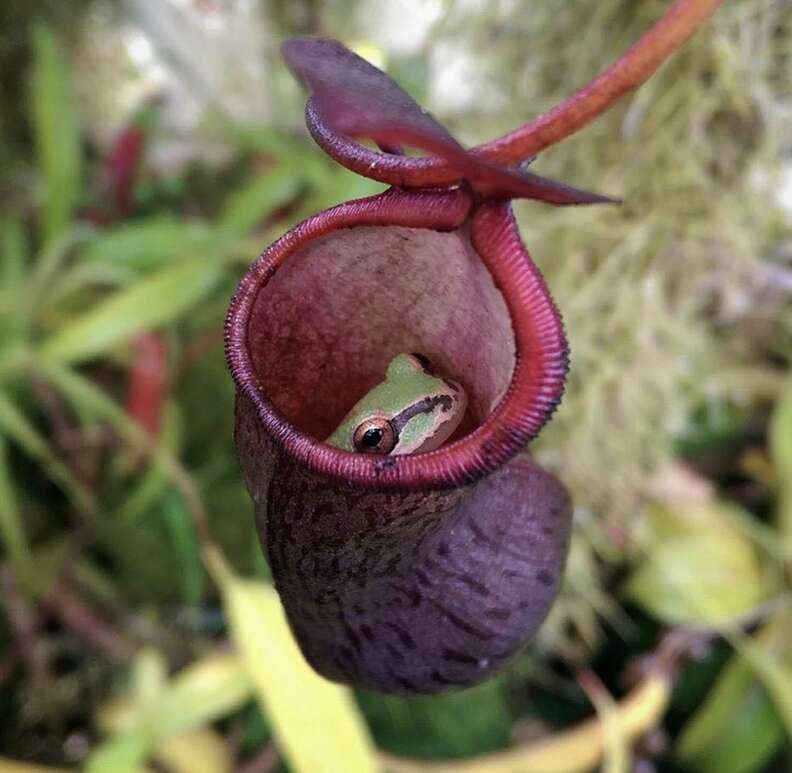Damon Collingsworth isn’t surprised when he spots a frog in one of his carnivorous plants.
One frog, known as a Pacific tree frog, loves to live inside the tube-like cup of the Nepenthes pitcher plants, which he sells at his carnivorous plant nursery, California Carnivores.

“Frogs really like a little tube to live in,” Collingsworth, the co-owner of California Carnivores, told The Dodo.
That can be a paper towel tube. Or the curl of a book. Or the hollow pitcher of a carnivorous plant.
The funny thing is, carnivorous plants will eat all kinds of small animals, including insects, arthropods, reptiles and even small mammals. But Nepenthes pitchers tend to leave the frogs alone. Either that, or the frogs know how to outsmart the plants.
“For the most part, the frogs are just too agile and their little sticky fingers allow them to climb out, whereas insects can’t,” Collingsworth said.

Still, Collingsworth said he’s seen carnivorous plants catch the occasional frog. So, why would a frog choose such a risky place to hang out in?
Collingsworth explained: “It’s a nice gig for the frog because you get a little shelter and a little place to live, but then those plants also have nectar that’s drawing in all kinds of insects.”
In other words, the frogs get easy meals while taking up residence in the pitchers.

Collingsworth said he doesn’t think the plants mind having the frogs around. In fact, they may even benefit from the arrangement.
“Even if the frog steals a bug, if it poops into the pitcher, it’s really just predigested fertilizer, and that’s food enough for the plant,” he said. “So it’s kind of hard to cheat the plant.”
It’s not just the Nepenthes pitchers that the frogs like to live in. Collingsworth said frogs also take up residence in American pitcher plants, or Sarracenia.
“Those are all covered in frogs, too,” Collingsworth said. “You’ll go out in the spring and summer and [the frogs] will be sitting on top of the little pitcher lids, waiting for insects to come so they can eat them.”

Collingsworth, who’s been working with carnivorous plants for about 30 years, said he quickly realized that people loved seeing photos of frogs in the carnivorous plants. So he and his colleagues started to take as many photos as possible of them, and posted them on their Instagram account.
“People love frogs,” Collingsworth said. “So I’d actively look for great little pictures of the frogs inside the plants.”

While calling a carnivorous plant home is dangerous, the frogs aren’t going anywhere.
“I always joke that we make more frogs than we lose here because we have so much standing water that there’s just a million [tadpoles] in the spring,” Collingsworth said.
“We’ve always had so many thousands of frogs,” he added.





